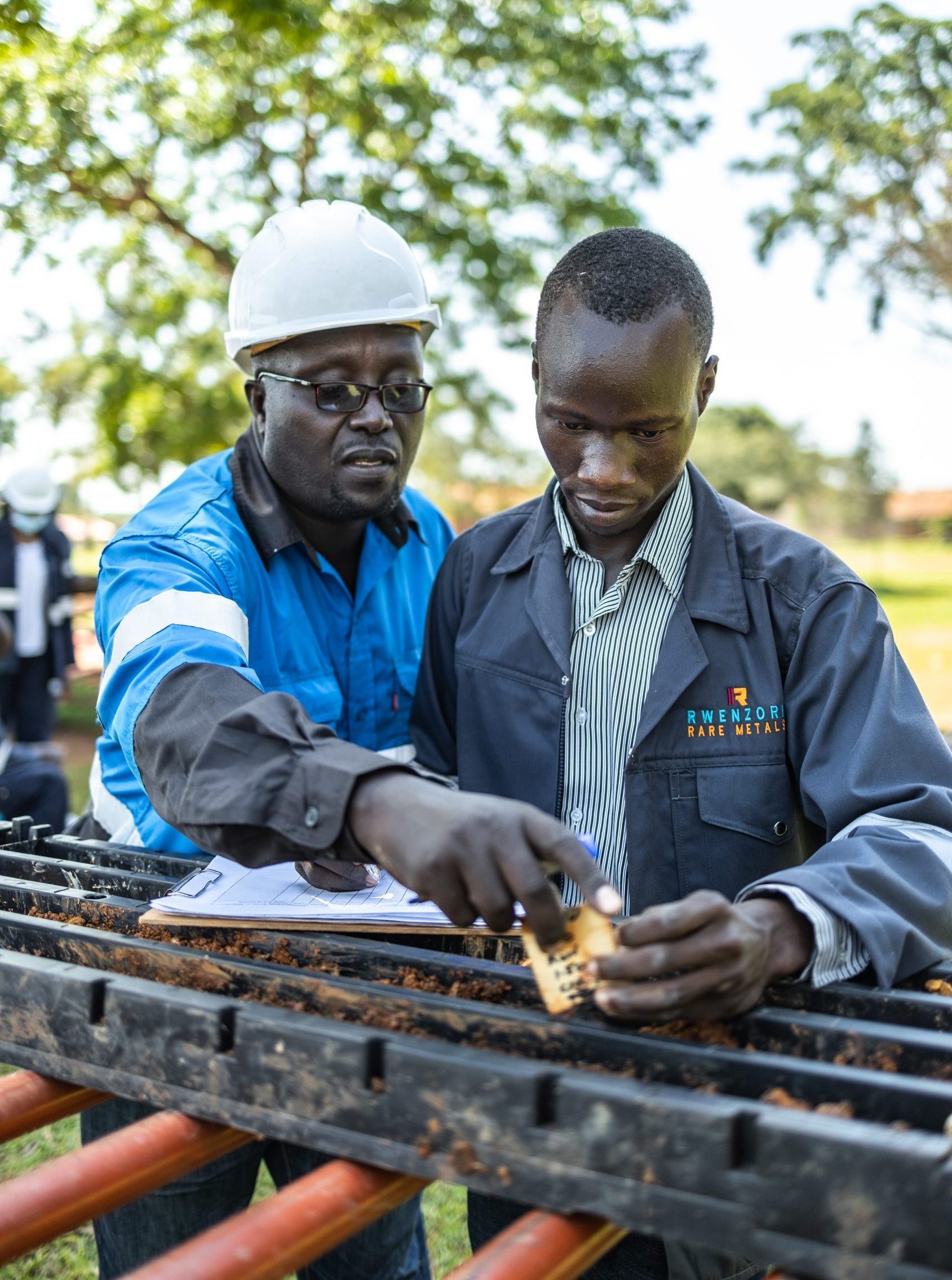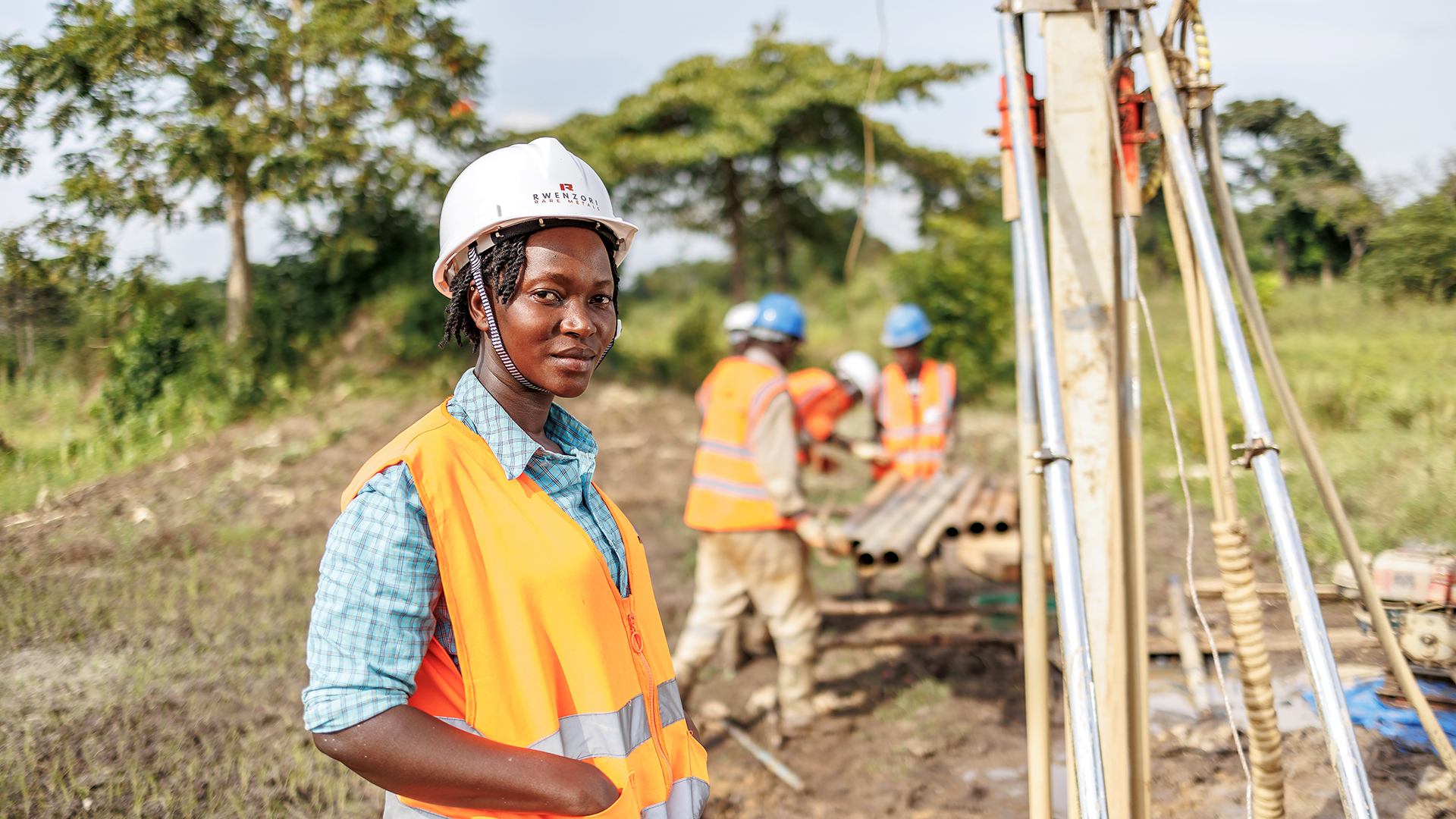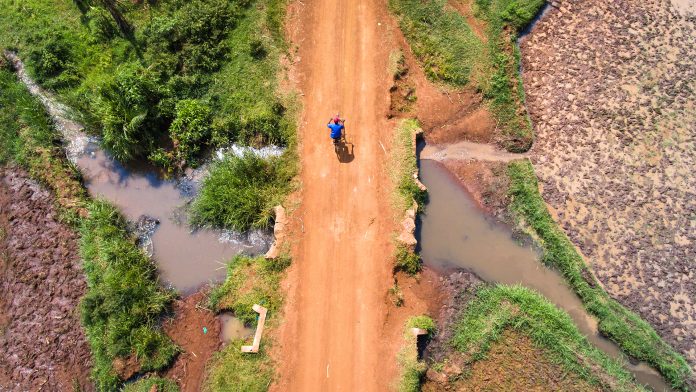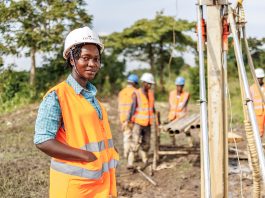Ionic Rare Earths are expediting the global transition to clean energy through magnet and heavy rare earth production via mining, refining and magnet recycling.
Australian-listed company, Ionic Rare Earths Limited (ASX:IXR), is setting itself apart from the growing list of rare earth hopeful miners by looking to solve the complex global problems of demand outstripping sustainable supply chains, geopolitics, and recycling. The strategy is to help transition and power a low-carbon future globally. The company is completing the circular economy of magnet rare earths through mining, refining and recycling and is building momentum towards achieving the title of the Western world’s first supplier of magnet and heavy rare earth elements. The forecast demand for these critical elements is already driving long-term appreciation – and Ionic Rare Earths will be able to feed this hungry market which is predicted to grow exponentially into the future.
Four elements make up the magnet rare earths classification – Neodymium (Nd), Praseodymium (Pr), Dysprosium (Dy) and Terbium (Tb) – and it is these four that investors should pay attention to now as these will be the four elements that literally drive the electric vehicle (EV) and offshore wind industry over the decades to come.
The Makuutu Rare Earths Project is gaining momentum and is set to become a globally significant producer of both magnet and heavy rare earth oxides (REO), providing a viable, low-cost, large-scale, alternative supply chain outside of China. Makuutu is already touted as one of the largest Ionic Adsorption Clay (IAC) deposits in the world, with a JORC Mineral Resource Estimate (MRE) of 532 million tonnes (Mt) at 640 parts per million (ppm) total rare earth oxides (TREO). Central to this is the highly classified Indicated Resource at Makuutu Central (RL 1693) of 259 Mt at 740 ppm TREO, which is supporting the current Mining Lease Application that is expected to be awarded in late Q1 2023.
The project is strategically important for western end users, with no current sources of heavy rare earths in production at present, and all supplies emanating from China, or Myanmar. This is unpalatable for some western governments, with several key military applications dependent upon the technologies derived from heavy rare earths – the fact that this material is also sourced from China further escalates anxiety about the supply chains.
The company is also heavily engaged with potential partners with the progression of the downstream refinery study expected to be finalised in Q1 2023, with the US as the preferred location for the facility to separate the mixed rare earth carbonate (MREC) product from Makuutu into separated and refined rare earth oxides (REO).
Ionic Rare Earths presently owns 51% of the Makuutu Project and will shortly move to a 60% ownership. The company has also initiated discussions on existing partners with Ionic Rare Earths having a pre-emptive right to secure the remaining 40% of the project.
The next phase of commercialisation of the company’s mining and recycling assets is now heavily focused on validating and scaling up with the construction of two Demonstration Plants – one in Uganda at the Makuutu Rare Earths Project, and the other at the company’s 100% owned subsidiary, Ionic Technologies International Limited (IonicTech) which is developing a magnet rare earth recycling facility in Belfast, UK via a patented hydrometallurgical process.
The Makuutu Rare Earth project
Ionic Rare Earths is developing the large-scale Makuutu ionic adsorption clay (IAC) deposit in Uganda, which the company says has one of the highest value ‘baskets’ of all rare earth element (REE) projects in evaluation today.
 The Makuutu Project will be Uganda’s flagship sustainable mine. The project is poised to be a low-cost, significant long-life supplier of high-value magnets and heavy rare earth oxides. Makuutu is an advanced-stage, IAC-hosted REE project highlighted by near-surface mineralisation and significant exploration upside. The clay-hosted geology at Makuutu is similar to major IAC rare earth projects in southern China, which are responsible for the majority (~98%) of the global supply of heavy rare earths. The deposit is shallow, with less than three metres of cover over a clay and saprolite zone that can stretch from 5 metres thick to nearly 30 metres thick, which results in low-cost bulk mining methods with a low strip ratio.
The Makuutu Project will be Uganda’s flagship sustainable mine. The project is poised to be a low-cost, significant long-life supplier of high-value magnets and heavy rare earth oxides. Makuutu is an advanced-stage, IAC-hosted REE project highlighted by near-surface mineralisation and significant exploration upside. The clay-hosted geology at Makuutu is similar to major IAC rare earth projects in southern China, which are responsible for the majority (~98%) of the global supply of heavy rare earths. The deposit is shallow, with less than three metres of cover over a clay and saprolite zone that can stretch from 5 metres thick to nearly 30 metres thick, which results in low-cost bulk mining methods with a low strip ratio.
The project is well-supported by tier-one existing infrastructure, which includes access to major highways, roads, hydroelectric power, water, and a professional workforce, and is located 120km east of Kampala in Uganda.
Processing is via a simple acidified salt desorption heap leaching, breaking the chemical ionic bond which washes the rare earths (in a chemical form) from the ore into a pregnant leach solution (PLS). The PLS is concentrated using membrane technology, from which the rare earths are precipitated as a mixed rare earth carbonate (MREC) product – a product which attracts both a higher payability and achieves a high basket price due to the dominant high-value magnets and heavy rare earths which make up over 70% of the product basket.
The Makuutu Project is set to become Uganda’s flagship sustainable mine, and through mining, support the country in achieving goals set in the Third National Development Plan (NDPIII). The company plans to use renewable energy, alternative sources of fuel, and apply sustainable mining practices to reduce their impact on the environment – positively contributing to Uganda’s Gross Domestic Product (GDP) for many decades into the future.
The awarding of the Environmental and Social Impact Assessment (ESIA) Certificate in October 2022 by the Ugandan Government’s environmental regular, NEMA (National Environmental Management Authority), has been a major milestone in developing the Makuutu Project. Work programmes continue in Australia and Uganda to de-risk the Makuutu Project, with the finalisation of the Mining Licence Application and award expected by the end of March 2023. Engagements continue with governments, government departments, and potential strategic partners interested in the unique appeal of the Makuutu basket of magnet and heavy rare earths to feed new emerging supply chains – and in doing so, providing secure, sustainable and traceable production.
ESG focus is a key path to successful business practices
In October 2022, two important ESG milestones were reached by the company and the project.
The first was accepted as a participant in the United Nations Global Compact. The United Nations Global Compact is the world’s largest corporate sustainability initiative and Ionic Rare Earths is committed to aligning corporate strategy and operations with the Ten Principles of the United Nations Global Compact. In a move to consolidate Environmental, Social and Governance (ESG) transparency, and to act on the United Nations “Agenda 2030”, the company will now begin to report on the progress of the United Nations Sustainable Development Goals (SDGs).
The Second was receiving a “BB” ESG score for Corporate and Makuutu Rare Earth Project activities from Digbee ESGTM, regarded as the mining sector’s leading independent assessment platform for ESG disclosure and endorsed by leading global financiers. This initial submission paves a path for operational and reporting improvements to be addressed across all pillars of Environmental, Social and Governance.
Social license to operate
Already the Makuutu Rare Earths Project has begun to transform local lives. A number of health, education, water purification, and community support programmes have taken place to date. These sustainable development programs continue to positively impact and support the communities which fall within the four districts (Bugweri, Bugiri, Iganga, and Mayuge) of the Makuutu Project. During the COVID-19 pandemic, these community programs supported community safety and improved employment opportunities.
These inclusive growth programs will continue to expand as the mine develops. Strong partnerships are being built to ensure that the social impact felt within the communities continues to drive change well into the future.
The company has integrated ESG principles into its operations, and has committed to sustainability, accountability, and transparency, the driving force behind the culture of the Ionic Rare Earths social programs.
Creating shared value
Ionic Rare Earths will create shared value as a miner, refiner, and recycler, securing magnet and heavy REOs for renewable energy applications and completing the circular economy of rare earths. The strategy will also see the potential for greater engagement with key western markets desperate to secure alternative sourced magnet and heavy rare earths to alleviate heightened concerns around supply chain risk and geopolitical concerns.
IonicTech has developed unique separation and refining technology and has further applied it to permanent magnet recycling. The technology was developed with Queens University Belfast (QUB) and its world-leading QUILL Centre (Queens University Ionic Liquids Laboratory).
The technology developed by IonicTech offers the first-mover capability for magnet recycling. The technology can hydrometallurgically extract the elemental REE content from the waste material, and then separate and refine it to produce the individually separated 99.9% grade REOs – Nd2O3, Pr6O11, Dy2O3, and Tb4O7 – to supply EVs, offshore wind turbines, and defence applications. The low capital, scalable technology development will also provide near-term potential for modular deployments to help western governments derive a portion of domestically sourced magnet REO from contributing toward global shortfalls expected to become evident from 2023 onwards.
Recycling of permanent magnets presently makes up approximately 40% of the current magnet rare earth supply chain, of which greater than 99% is conducted in China. IonicTech will recycle and refine magnet REOs, supplying a secure and traceable solution to providing the inputs needed to accelerate the world towards carbon neutrality.
The new brand consolidates upon Ionic Rare Earths’ strategy to become a fully integrated circular economy participant for magnet and heavy rare earths. Increasing the supply of these critical elements by providing domestic, modular recycling developments represents a strong opportunity for Ionic Rare Earths to develop an early mover advantage on the back of their advanced technology.
IonicTech is now accelerating the scale-up of the technology at its new facility at the Titanic Quarter in Belfast. The company was recently awarded a grant of £1.72m (approximately A$2.9m) from the UK Government’s Innovate UK Automotive Transformation Fund Scale up Readiness Validation (SuRV) programme to develop a demonstration-scale magnet recycling plant, a significant step towards securing the UK supply of critical rare earth metals for EV manufacturing.
Ionic Rare Earths sees the commercialisation of the technology offering from IonicTech into modular magnet recycling initiatives and partnerships to be very exciting, with near-term potential also to stimulate new supply chains to develop organically. With global governments looking to develop domestic magnet REO supply chains to empower localised manufacturing, including EV and renewable energy transitions, Ionic Rare Earths expects significant investment to likely emanate from government groups looking to support these initiatives over the remainder of the decade, with some near term commercial recycling initiatives also under evaluation.
Commenting on Ionic Technologies’ recent progress, Managing Director of Ionic Rare Earths, Mr Tim Harrison, made the following statement: “We are delighted to be able to now formally progress with the change of name to Ionic Technologies, and to commence building the brand from which we will commercialise a leading edge, patented technology to help deliver a viable alternative solution for the processing of waste agent and swarf to produce separated and refined REOs to be used in new permanent magnets.
“The latest statistics from Wood MacKenzie and Adamas Intelligence suggest the magnet REO supply is sourced 40% from recycled materials, with China dominating over 99% of the magnet recycling landscape. Ionic Rare Earths, through Ionic Technologies, aims to provide an alternative option, with a low cost, modular entry for recycled magnet REOs deployable close to sources of secondary material, directly into western EV and offshore manufacturing markets.
“A further benefit from the recycling of spent magnets and swarf is that it does not have any radionuclide issues to manage, a problem that creates significant issues for primary hard rock REE resources. The positive sustainability impacts and material value recycling adds to Ionic Rare Earths’ stakeholders, and, importantly to the environment, is an example of the global solutions that are being addressed through our corporate strategy.
“The circular economy of rare earths will become increasingly more important over years to come, with the current production of magnet rare earths in significant deficit to forecast demand, and with no new supply coming to production, and no new projects in construction today, the deficit is expected to further increase.”








